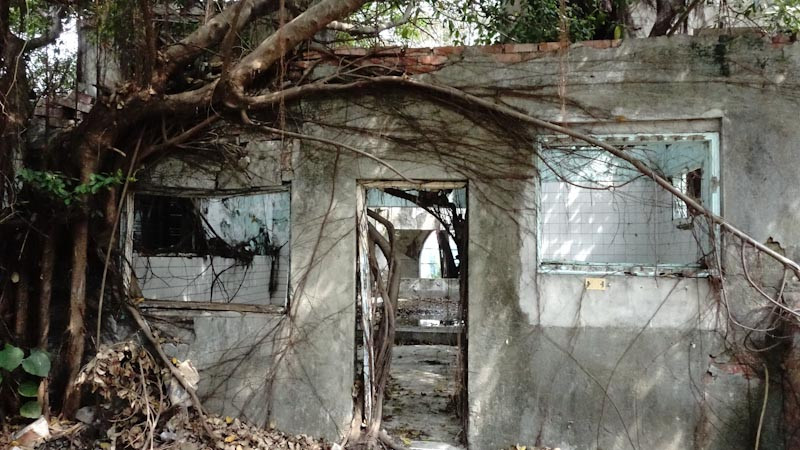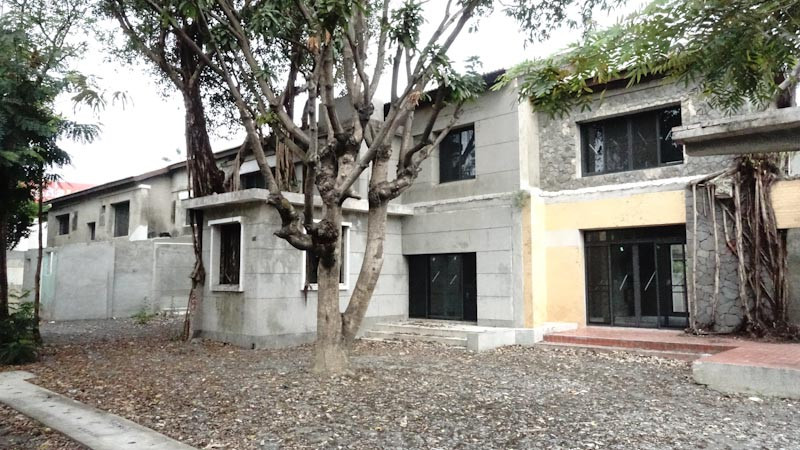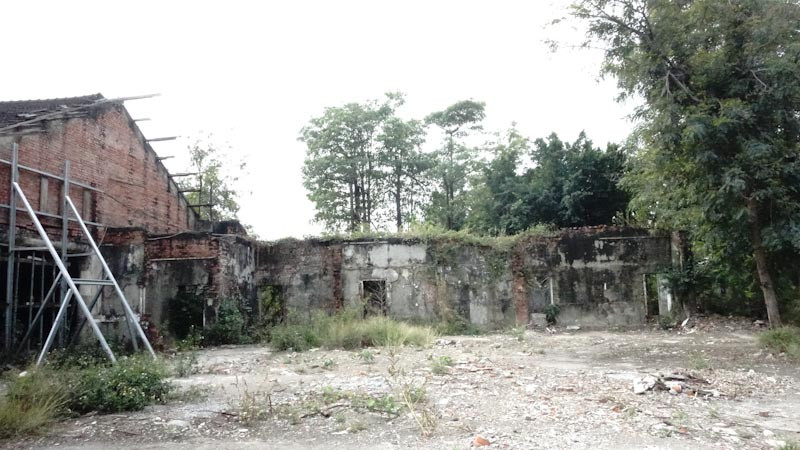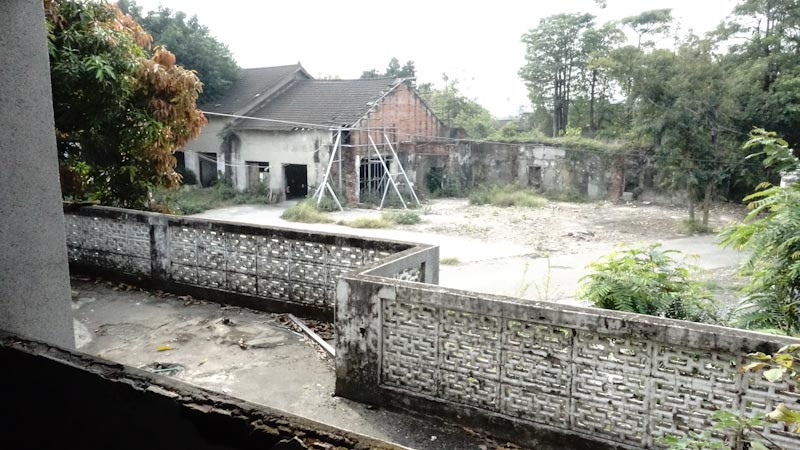Xing Village
The former Gangshan Imperial Japanese Navy Air Service dormitories are the Japanese Navy’s most important Air Service Command Center in Taiwan. One of the most important bases in Taiwan that develops Air Service pilots and technology. Extinctive front porch and two-storey architecture with continuous arches. Taiwan’s rare military air service town architecture.
基本資訊
地點: Junction of Baimi Road and Jieshou West Road in Gangshan District, Kaohisung City
拍攝日期: 2019-10-07
GPS定位: 22.784240, 120.285559
如何前往
Get off at Gangshan Interchange of National Freeway 1 and reach Provincial Highway 1. Follow Jieshou Road and go straight for approximately 2kms before reaching destination.
景點介紹
Xing Village is the 6th Military Dependents’ Village at Jieshou Road, Gangshan District in the direction towards the Air Force Academy, which is close by Yangming Park, Zhaoxiang Elementary School, and Xinxin Market. The Village houses the dormitory group for senior pilots of the Japanese Navy Air Service. After World War II ended, the whole Gangshan Navy Air Service Base was taken over by the Republic of China government and was later turned into the base for Air Force Headquarters. In 1949, the Air Force Academy, Air Force Electronic Communication Academy, and Air Force Mechanical Academy were successively re-established at the Gangshan Base. As large groups of key Air Force officials transferred to Taiwan, Xing Village it became the dormitory group for the Air Force flight instructors at the Air Force Academy after the three Air Force academies moved to Taiwan. Since the flight instructors’ dormitory in Chengdu, Szechuan was called the Xing Village, the dormitory group in Taiwan was then also called Xing Village.
Since the Xinxin Market near the Xing Village is where people in the neighborhood go to purchase their daily essentials, people in Shiluo Lake have been calling the Market “Purchaser” in Japanese. On the other hand, the Han people referred the Xing Village as the “Five Buildings.”(Mandarin) The first version had it that there are dormitories with five rows of buildings and houses on the east and the west side of Xing Village, hence the name “Five Buildings.” The other version had it that it actually meant “Russian” (sounds similar to “Five Buildings”). As most of the pilots evacuated to Taiwan from China spoke with Szechuan or Yunnan accents, the locals had hard times understanding them while doing business with them in Xinxin Market. So they called the language the pilots spoke as “Russian Language” and the Village “Russian.”
Back in those days, the kitchens were all built appending to both ends of the five buildings, creating a special scenery. There are also five long rod-like houses situated left of the basketball court. So Xing Village has also been described as “Five Buildings, Five Houses,” which are slightly different from the long rod-like houses built by the Nationalist government and are a bit higher and with ventilation shafts.
Back in those days, Xing Village was probably the one built with the most details within the Gangshan Military Dependents’ Village. There were fences surrounding the place, and there were guards on duty at both sides of the gate; unauthorized personnel were not allowed to enter. On the left of the entrance, there is a basketball court. And in front of the court, there is a very unique climbing vine that has been put up by a rack, which was planted by the President of the Self-Governance Association in the 1950’s. There were comprehensive facilities that included a convenience store, a barber shop and a community office (that offered newspapers for people to read and was also used for community meetings back in those days; and it is now a table tennis court). Next to the community office is a grand auditorium (which was later transformed into military dependents’ dormitory). On holidays or special occasions, pilots would bring their wives here to dance. There was also a bar inside that was visited by foreigners (U.S. military personnel stationed in Taiwan). At that time, going to the auditorium was considered a fairly high-society enjoyment – ordinary people were not able to enter and one would only have the chance to enter if brought in by a friend.
There is a corridor that connects the community office to the building at the back. At first it served as a guards’ camp with guard posts. On the side there is an arc-shaped firefighting pool and an air-raid shelter. On the left, there was a building used originally as the school principal’s residence but was later transformed into a dormitory.

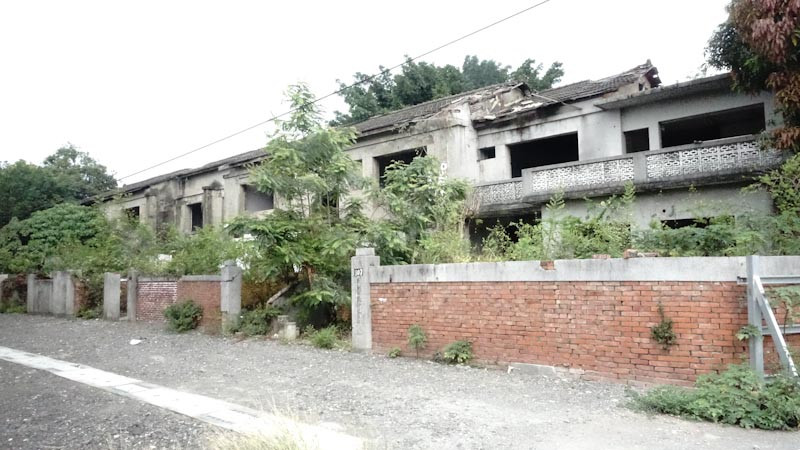


拍攝前的注意事項
2. The monument is arranged by a reversible construction method. No nailing, hammering, banging or affixing is allowed to damage the furnishings of the monument. No smoking or open flame is allowed.
3. This scene is not open to the public. Please contact the Culture Heritage Center if you are interested in shooting at the scene.
交通資訊
Xing Village
基本資訊
地點: Junction of Baimi Road and Jieshou West Road in Gangshan District, Kaohisung City
拍攝日期: 2019-10-07
GPS定位: 22.784240, 120.285559
景點標籤
Filming in Kaohsiung!
Provide overall assistance includes location scouting, shooting and marketing.
Support film workers achieve their dreams.
